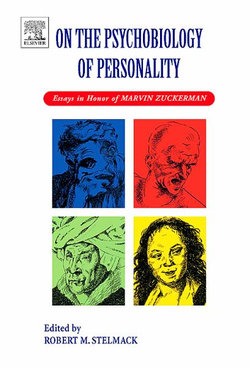These experiments, supported by grants from NIMH, occupied him for the next 10 years during his time at Brooklyn College, Adelphi University, and the research labs at Albert Einstein Medical Center in Philadelphia. This last job was his second interdisciplinary experience working in close collaboration with Harold Persky who added measures of hormonal changes to the sensory deprivation experiments. He collaborated with Persky in studies of hormonal changes during experimentally (hypnotically) induced emotions. During his time at Einstein, he established relationships with other principal investigators in the area of sensory deprivation and they collaborated on the book Sensory Deprivation: 15 years of research edited by John Zubek (1969). His chapter on theoretical constructs contained the idea of using individual differences in optimal levels of stimulation and arousal as an explanation for some of the variations in response to sensory deprivation.The first sensation seeking scale (SSS) had been developed in the early 1960's based on these constructs.
At the time of his move to the University of Delaware in 1969, he turned his full attention to the SSS as the operational measure of the optimal level constructs. This was the time of the drug and sexual revolutions on and off campuses and research relating experience in these areas to the basic trait paid off and is continuing to this day in many laboratories. Two books have been written on this topic: Sensation Seeking: Beyond the Optimal Level of Arousal, 1979; Behavioral Expressions and Biosocial Bases of Sensation Seeking, 1994. Research on sensation seeking in America and countries around the world continues at an unabated level of journal articles, several hundred appearing since the 1994 book on the subject. The theoretical model of sensation seeking changed as a consequence of research on the biological correlates of sensation seeking which included biochemical as well as psychophysiological variables. Genetic studies also indicated that sensation seeking was a major trait with a strong genetic/ biological basis.Zuckerman and his colleagues conducted research on the psychophysiological correlates of sensation seeking.
One of these areas, augmenting/reducing of the cortical evoked potential, has provided a well replicated model of brain functioning in high and low sensation seekers, and Siegel has extended this into a model for sensation seeking in cats and rats. This animal model provides a link between sensation seeking and behavioral, genetic, physiological, and biochemical bases for the trait in other species. Investigators at other universities, Bardo at the University of Kentucky and LeMoal and Simon at the University of Bordeaux, have used the sensation seeking model to investigate the psychobiological basis of novelty seeking in rats. Zuckerman's interest in the biological basis of the trait of sensation seeking broadened into a more general interest in the biological bases of personality, culminating in his book:
Factor analytic studies showed that a combined factor of impulsivity and sensation seeking formed one of five, robust and replicable factors of personality. Research on this new measure of the basic trait is ongoing.



Share This Book: